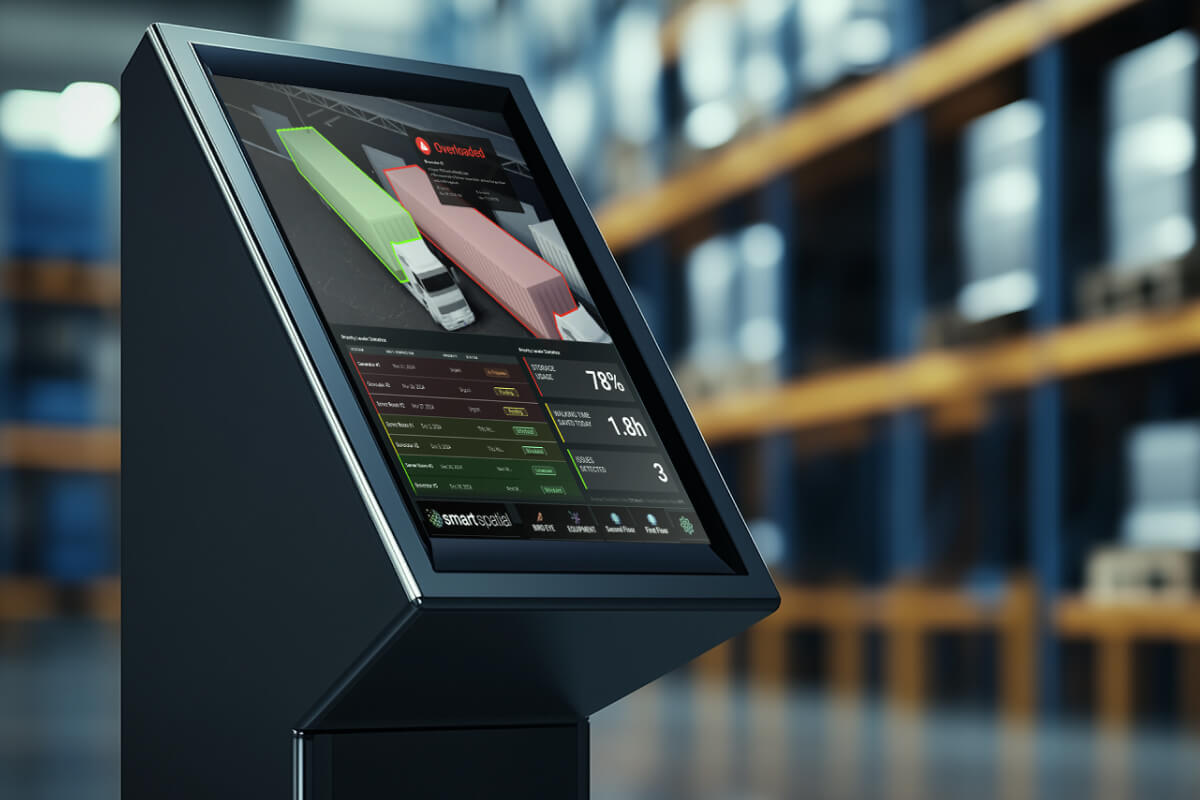This article examines how operational digital twins assist retailers in reducing costs, enhancing inventory management, optimizing warehouse operations, and improving business functions in sales, marketing, and training.
What Are Operational Digital Twins in Retail?
An operational digital twin is a real-time, virtual representation of a warehouse, logistics system, retail store, or supply chain. Continuously updated with live data from IoT sensors, AI-driven analytics, and historical patterns, operational digital twins enable businesses to predict inefficiencies, optimize operations, and automate decision-making before implementing changes in the physical world.
Cutting Costs with Operational Digital Twins in Warehousing
Retailers spend millions on inefficient warehouse operations, excessive inventory, and delays. Digital twins help reduce costs by optimizing every aspect of warehouse management.
1. Optimized Warehouse Layout & Space Utilization
- Digital twins simulate different warehouse layouts to determine the most efficient configuration for storing and picking items.
- AI-powered heatmaps analyze worker movement to reduce unnecessary walking time and improve picking routes.
- Retailers reduce storage costs by up to 20% by optimizing space and minimizing wasted areas.
2. Predictive Maintenance for Equipment
- Sensors track warehouse machinery, conveyors, and forklifts, predicting failures before they happen.
- Scheduled maintenance based on actual equipment conditions prevents costly breakdowns and downtime.
- Preventive maintenance reduces unexpected failures by 30%, cutting repair costs and improving warehouse uptime.
3. Energy Efficiency & Cost Savings
- Smart sensors adjust lighting, heating, and cooling based on warehouse activity, reducing unnecessary energy use.
- AI-powered simulations predict energy demand and adjust consumption dynamically.
- Warehouses save up to 15% on energy costs, making logistics operations more sustainable.
Expanding Digital Twin Applications: Sales, Marketing, and Training
Beyond logistics and supply chain management, operational digital twins transform retail sales, marketing, and employee training.
1. Sales and Marketing Optimization
- Customer Behavior Analysis – Digital twins simulate store customer movements, improving shelf placements and promotional strategies.
- Marketing Campaign Performance Tracking: AI-driven digital twins analyze the impact of in-store promotions and digital marketing campaigns in real-time, allowing dynamic strategy adjustments.
- Personalized Shopping Experience – AI-powered simulations personalize product recommendations based on customer preferences.
2. Employee Training & Productivity Enhancement
- Virtual Training Environments – Employees can practice handling retail scenarios, warehouse operations, or customer interactions in a risk-free virtual twin environment.
- Process Optimization – Digital twins assess employee workflows and suggest efficiency improvements, reducing onboarding times.
Prominent Retail Cases Using Operational Digital Twins
Walmart – Warehouse and Inventory Optimization
Walmart employs digital twin technology to create virtual stores and distribution center replicas. This approach allows the company to simulate various store layouts and operational strategies before implementing them physically, leading to enhanced decision-making and operational efficiency. For instance, by leveraging digital twins, Walmart has anticipated consumer demand, optimized inventory levels, and identified opportunities for cross-selling and upselling, thereby driving incremental sales and revenue growth.
Sources:
- https://www.the-sun.com/money/13304708/walmart-ceo-john-furner-nrf-inflation-ai-digital-twin/
- https://ctomagazine.com/walmart-case-study-digitalization/
Amazon – Robotics and Supply Chain Digital Twins
Amazon integrates digital twins with AI and robotics to optimize warehouse automation and delivery routes. By creating full-scale digital twins of its warehouses, Amazon can simulate and enhance warehouse design, increasing productivity and efficiency. This technology lets the company test and implement new fulfillment center designs virtually before physical deployment, ensuring optimal performance.
Sources:
- https://resources.nvidia.com/en-us-retail-resource-library/amazon-robotics
- https://aws.amazon.com/blogs/supply-chain/aws-simulation-and-digital-twin-to-increase-warehouse-productivity/
IKEA – Store Layout Optimization
IKEA utilizes digital twins to test different store layouts in a virtual environment, achieving a 15% increase in customer engagement and satisfaction. This approach allows IKEA to refine product placement and store configurations, enhancing the overall shopping experience and increasing sales. Additionally, digital twins have enabled IKEA to identify inefficiencies in store operations, leading to a 12% reduction in overall operational costs.
Source: https://thecodework.com/blog/enterprise-retail-management-with-digital-twin-solutions/
Target – Predictive Equipment Maintenance
Target applies digital twins to track HVAC systems and refrigeration units in stores. By implementing a predictive maintenance framework based on digital twin technology, Target can forecast hardware failures, reducing downtime and ensuring optimal system health. This strategy helps prevent unexpected failures, reducing energy costs and equipment downtime.
5. Nike – AI-Powered Marketing & Customer Engagement
Nike leverages digital twins and AI to enhance customer experiences, streamline its supply chain, deliver targeted marketing campaigns, and accelerate product development. By analyzing in-store and online customer engagement, Nike can optimize marketing strategies, product placement, and sales performance. This approach allows Nike to offer personalized experiences and improve customer satisfaction.
Source: https://digitaldefynd.com/IQ/ways-nike-use-ai/
ROI: How Operational Digital Twins Deliver Long-Term Value
Retailers that adopt digital twin technology see significant financial and operational returns within a short timeframe:
- 20-30% reduction in warehouse and logistics costs through space optimization and automation.
- Faster order fulfillment rates with real-time inventory tracking and optimized picking routes.
- Increased supply chain resilience, ensuring timely deliveries and fewer disruptions.
- Improved sustainability with energy-efficient warehouses and reduced transportation emissions.
- Better sales performance and marketing efficiency through customer insights and campaign tracking.
The Future of Operational Digital Twins in Retail
As retail logistics and business operations become more complex, operational digital twins are no longer optional—they’re essential. From cutting warehouse expenses and improving inventory accuracy to optimizing sales strategies and enhancing customer experiences, digital twins provide a decisive competitive advantage.
Retailers embracing digital twins today will lead tomorrow's industry, ensuring more innovative, leaner, and cost-efficient operations.

